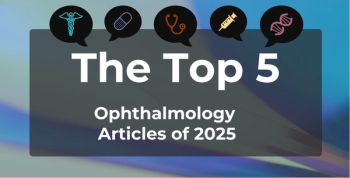
Contributor: The Need to Go Beyond Medication Adherence in the Medicare Population
Medication adherence is not the only area to focus on for older adults who have Medicare coverage. Optimizing treatment and medication access are also important.
For any health plan, keeping members healthy is largely a matter of ensuring they are on optimal treatments. This is particularly important for elderly individuals, in whom the wrong drug or dose, or the use of unnecessary medications, may lead to dangerous consequences, such as an increased risk of falling and hospitalizations.1
Compared with the general population, older adults have a higher incidence of medication overload, wherein medication use causes more harm than benefit.2 Additionally, they are hospitalized for adverse drug events at a higher rate than the general population is hospitalized for opioids.2,3 Those trends make it paramount to ensure older adults are on the safest, most effective medications and that they adhere to their prescribed regimens.
However, plan administrators who focus too narrowly on adherence may miss the factors that pose barriers to medication access and health optimization in older individuals. In many cases, the socioeconomic and behavioral aspects of medication optimization are as important as the clinical.4 This is especially true for older patients and individuals of racial and ethnic minorities, both of whom have historically faced structural and economic barriers that exacerbate health conditions—a serious issue that has become more evident during the COVID-19 pandemic.
A Commonwealth Fund survey found that older Latinx and Black adults were more than twice as likely an White older adults to report economic hardships related to COVID-19 vs White patients, and overall, the proportion of older adults who reported having used up their savings or lost their jobs during the pandemic was 4 to 6 times higher in the United States than in many other developed countries.5
The pandemic has also exacerbated the challenge of securing access to care for chronic conditions. In the Commonwealth Fund survey, 37% of older adults with 2 or more conditions reported cancellation or postponement of a provider appointment due to COVID-19.5 Another study found that 36% of Black and 39% of Latinx older adults experienced a pandemic-related disruption in medical care compared with 31% of White adults in the same age group.6 Those statistics underscore the importance of identifying those for whom adequate disease management means ensuring access to transportation, home health, and/or medication delivery services. In addition, language and cultural barriers, compounded by the complexity of medication regimens, highlight the importance of taking a holistic approach.
For any Medicare plan, the stakes are higher than merely improving one’s Star Rating. A plan must not only provide members with the resources they need to stay safe and healthy, whether in the form of “whole person” home health, educational programs, or connecting members to housing services; it must also be able to identify members who can potentially benefit from such measures. Effective use of technology can address the complex web of factors that affect a person’s health care. Sophisticated, configurable algorithms that encompass social determinants of health such as age, ethnicity, and socioeconomic status enable targeted health planning and counseling for individuals based on their specific needs. Driven by advanced artificial intelligence technologies, these algorithms can ensure members are not only on the right medications at the right dose, but are also receiving culturally appropriate and inclusive care.
The urgency of medication optimization among Medicare Advantage enrollees is underscored by the rapid growth of the older population, with the number of Americans aged 65 and older expected to reach 80 million by 2040, by which time the number of those aged 85 and older is expected to nearly quadruple from 2000 levels.7 To ensure equitable care for this growing population, CMS has released a Framework for Health Equity, a plan for designing and operationalizing policies and programs to eliminate avoidable health disparities.8 The approach has a particular focus on chronic and infectious diseases (eg, diabetes, COVID-19), which disproportionately affect members of historically underserved communities. The Framework identifies several system- and community-level strategies, including robust data and infrastructure systems; effectively engaging with individuals, families, and caregivers as partners in their health care; and incorporating population health efforts into measurement and payment.
Health care technology companies should be aligned with the agency's initiatives. The solution lies in the adoption of technology-based, systemwide approaches to address health inequities meaningfully and durably at scale. Effecdting such meaningful change means expanding beyond measurement of immediate quality outcomes; indeed, the nation’s well-being depends on enabling long-lasting improvements in health, evidenced by accessible, value-based care that keeps our elderly populations safe, healthy, and thriving.
References
1. Thomas EJ, Brennan TA. Incidence and types of preventable adverse events in elderly patients: population based review of medical records. BMJ. 2000;320(7237):741-744. doi:10.1136/bmj.320.7237.741.
2. Garber J, Brownlee S. Medication overload: America’s other drug problem. The Lown Institute. Published April 2019. https://lowninstitute.org/wp-content/uploads/2019/08/medication-overload-lown-web.pdf
3. Healthcare Cost and Utilization Project (HCUP) fast stats. Agency for Healthcare Research and Quality. Published 2018. https://datatools.ahrq.gov/hcup-fast-stats.
4. Wilder ME et al. The impact of social determinants of health on medication adherence: a systematic review and meta-analysis. J Gen Intern Med. 2021;36(5):1359-1370. doi:10.1007/s11606-020-06447-0.
5. Williams RD, Shah A, Doty MM, Fields K, FitzGerald M. The impact of COVID-19 on older adults. The Commonwealth Fund. September 2021. https://www.commonwealthfund.org/publications/surveys/2021/sep/impact-covid-19-older-adults
6. Guerrero LR, Wallace SP. The impact of COVID-19 on diverse older adults and health equity in the United States. Front Public Health. Pubished online May 17, 2021;9:661592. doi:10.3389/fpubh.2021.661592
7. The US population is aging. Urban Institute. Published 2022. https://www.urban.org/policy-centers/cross-center-initiatives/program-retirement-policy/projects/data-warehouse/what-future-holds/us-population-aging
8. CMS Framework for Health Equity. CMS. Published 2022. Updated April 22, 2022. https://www.cms.gov/About-CMS/Agency-Information/OMH/equity-initiatives/framework-for-health-equity
Newsletter
Stay ahead of policy, cost, and value—subscribe to AJMC for expert insights at the intersection of clinical care and health economics.








